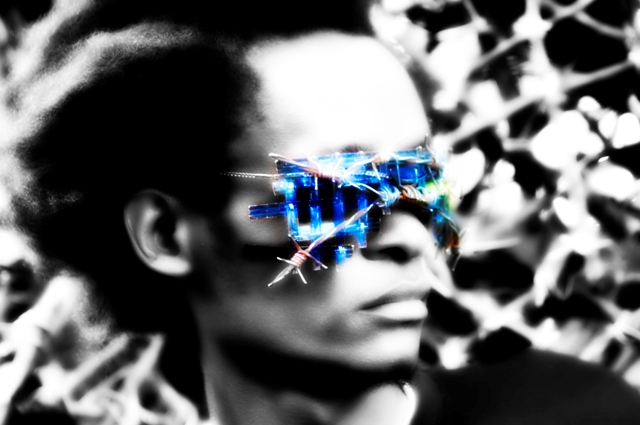News from Civsy, based on generative AI tools and retrieval-augumented real time data searchThe Australian arts community is embroiled in controversy over the censorship of Palestinian symbols and artists. The National Gallery of Australia (NGA) covered Palestinian flags in the Te Paepae Aora'i – Where the Gods Cannot be Fooled exhibition, citing security concerns. This act, occurring ten days after installation, sparked accusations of political censorship.
Critics, including the National Association for the Visual Arts and the Australian Palestine Advocacy Network, argue this move undermines artistic integrity and erases Palestinian identity. AFIC President Dr. Rateb Jneid condemned the act as part of a broader trend to suppress Palestinian representation.
Simultaneously, Creative Australia reversed the appointment of Lebanese-Australian artist Khaled Sabsabi for the 2026 Venice Biennale due to past works linked to Hezbollah leader Hassan Nasrallah. This decision, criticized by artists such as Archie Moore, further fueled concerns about political interference in the arts.
These events unfold amid rising tensions over free expression, cultural representation, and security concerns, leaving Australian institutions under pressure to justify their actions while maintaining artistic freedom.
Background:
The Australian arts scene is currently embroiled in a significant controversy surrounding the representation of Palestinian symbols and artists, particularly in relation to two recent incidents. These controversies highlight the complex intersection of art, politics, and cultural representation in Australia, particularly concerning the Palestinian issue. They have sparked debates about artistic freedom, censorship, and the role of cultural institutions in addressing sensitive political topics.
National Gallery of Australia Censorship
The National Gallery of Australia (NGA) in Canberra has covered Palestinian flags in a major exhibition following what they claim was a "security threat assessment"1. This action has sparked outrage and accusations of censorship:
Two Palestinian flags on a large tapestry in the "Te Paepae Aora'i – Where the Gods Cannot be Fooled" exhibition were obscured with white fabric1.
The artwork is part of a group show by the Pacific Indigenous art collective SaVĀge K'lub1.
Rosanna Raymond, the exhibition's curator, stated that she ultimately agreed to conceal the flags despite her initial resistance1.
The NGA's decision came 10 days after the artwork was installed, raising questions about the timing and nature of the alleged security threat1.
Reactions and Criticisms
The NGA's action has been met with strong criticism from various quarters:
Penelope Benton, executive director of the National Association for the Visual Arts, emphasized that covering elements of an artwork risks undermining the integrity of the artists' message1.
Nasser Mashni, head of the Australian Palestine Advocacy Network, called it a "disgraceful act of censorship" rooted in "political cowardice"1.
The Australian Federation of Islamic Councils (AFIC) condemned the NGA's decision, describing it as an "attack on Palestinian identity"3.
Dr. Rateb Jneid, AFIC President, stated that this censorship is part of a wider trend to suppress, dehumanize, and erase Palestinian people from history3.
Venice Biennale Controversy
This incident follows another controversy involving the 2026 Venice Biennale:
Creative Australia walked back on the appointment of Lebanese-Australian artist Khaled Sabsabi and curator Michael Dagostino for the 2026 Venice Biennale15.
Sabsabi's selection was questioned due to some of his past works, including one depicting Hassan Nasrallah, the leader of Hezbollah57.
The decision to drop Sabsabi has been criticized by other artists, including Archie Moore, who won the Golden Lion at the previous Venice Biennale57.
Broader Context
These events are taking place against a backdrop of increasing tensions:
There have been reports of anti-Semitic attacks in Australia, including an arson attack on a childcare center in Sydney7.
The Australian government has been under pressure to respond to these incidents and balance concerns about both anti-Semitism and freedom of expression7.
Artists and activists are calling for the protection of Palestinian representation in all fields, including art, academia, and public discourse3.
Citations:https://www.indybay.org/newsitems/2025/02/22/18873551.phphttps://www.canberratimes.com.au/story/8898512/islamic-body-condemns-nga-for-covering-palestine-flags/https://afic.com.au/2025/02/afic-condemns-the-national-gallery-of-australias-censorship-of-palestinian-art/https://www.linkedin.com/pulse/palestinian-flags-covered-up-national-gallery-trump-f8oichttps://www.theartnewspaper.com/2025/02/13/khaled-sabsabi-will-no-longer-represent-australia-at-the-venice-biennale-in-2026https://www.instagram.com/palestine.justice.movement/p/DGUYRKNTD5V/https://news.artnet.com/art-world/australia-drops-khaled-sabsabi-venice-biennale-2608758https://x.com/thehistoriann/status/1893073732576649503








